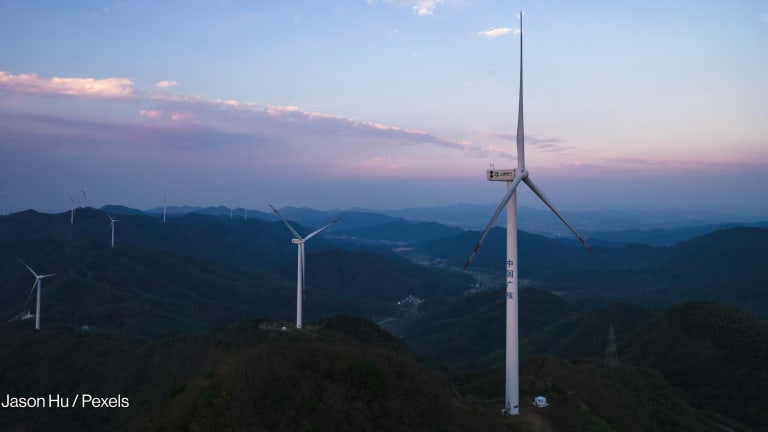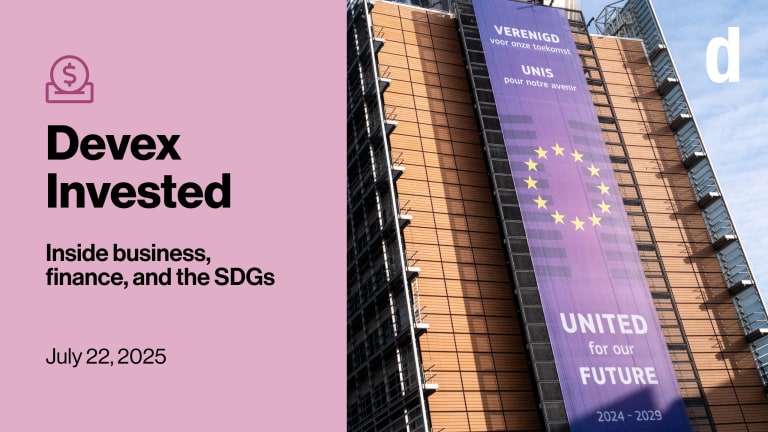
KATOWICE, Poland — In recent years China has emerged as a giant of green finance.
The first Chinese green bond was issued in 2015, and today China is already the second-largest source of green bonds in the world. In December 2017 China unveiled a domestic carbon market intended to be twice as large as the European Union’s. In 2007 China issued a Green Credit Policy, encouraging banks to lend more to renewable and sustainable industries and to withdraw loans from high-polluting projects. That policy was reiterated and revamped in the 2012 Green Credit Guidelines.
Partly as a result of these financing efforts, China, the world’s largest carbon emitter, is now also the largest investor in renewable energy in the world, directing $126.6 billion to the sector in 2017 — 30 percent more than in 2016.
“China’s overseas investment policies are currently inconsistent with the domestic investment policies — and with the Paris Agreement.”
— Kelly Gallagher, professor of energy and environmental policy at Tufts UniversityThese would seem like promising signals from a country with plans to deliver huge amounts of infrastructure financing — $150 billion per year, by some estimates — to developing countries through its massive Belt and Road Initiative. As China emerges as a major financier for infrastructure, transport, and commercial projects in countries desperate for investment, the opportunity to align those investments with environmental priorities could be a huge boon for low-carbon development pathways.
Countries that are part of the Belt and Road Initiative, including China, account for more than half of the world’s total carbon emissions.
“All the infrastructure going into place has the potential for avoiding rapid growth in emissions, or fueling it,” said Kelly Gallagher, professor of energy and environmental policy at the Fletcher School at Tufts University.
The problem, according to Gallagher’s analysis of China’s policies and investments, is that while the country has put a green face on finance at home, its overseas investments seem to operate according to entirely different rules and priorities.
While multiple policies and guidelines govern environmental and climate-related protections in domestic finance, only two — the 2013 Guidelines for Environmental Protection in Overseas Development Finance and the 2017 Guiding Opinions on Promoting the Green BRI — apply to China’s overseas investments, according to Gallagher. There is currently no formal law regulating environmental protection in China’s overseas investments, according to her research.
“China’s overseas investment policies are currently inconsistent with the domestic investment policies — and with the Paris Agreement,” Gallagher said.
The contrast is starkly evident when comparing the investments China restricts and encourages at home through its industrial policies, versus those it restricts and encourages abroad. In domestic finance, restricted investments include heavy industry, coal mines, and traditional fuel vehicles. For outbound investments, China restrictions include weaponry, cross-border water resources, news media, and film.
The encouraged list for China’s outbound investments includes advanced manufacturing and energy resources such as oil gas and minerals.
Will the World Bank push China's Belt and Road Initiative in the right direction?
The World Bank has lent its name to China's massive infrastructure effort, but will it also ask the hard questions?
“Clearly there’s an effort to encourage investments in some of these fossil fuel industries,” Gallagher said.
The effort is paying off.
According to a Boston University and World Resources Institute analysis of China’s overseas investments in the energy and transportation sectors, 91 percent of syndicated loans, 61 percent of loans from the China Development Bank and the China Eximbank, 93 percent of Silk Road Fund investments, and 95 percent of Chinese state-owned enterprise investments are in fossil fuels.
“Most Chinese deals in energy and transportation are still tied to traditional sectors and do not show a strong alignment with the low-carbon priorities included in BRI governments’ [nationally determined contributions],” the report concluded, referring to the plans that countries have developed to meet their Paris Agreement commitments.
The same study found that in order to fulfill their NDCs, the 31 BRI countries will require about $469 billion of investment in renewable energy by 2030.
“There’s clearly opportunity in this industrial policy space to move toward restricting some of the high-carbon investments, and then encouraging the investment in low-carbon investments overseas,” Gallagher said.
If it wanted to pursue that path, China could look to some of the other major global development financiers that have implemented restrictions to see what kinds of energy projects they will and will not finance. In 2013 the World Bank adopted an energy strategy that restricts investments in coal projects except under “rare circumstances,” and in 2017 announced it would no longer finance upstream oil and gas projects after 2019.
But the responsibility to shift investments away from fossil fuels and into renewables is not just China’s alone. Currently, Chinese investors are required to comply with host-country environmental regulations, so those countries accepting Chinese finance must also establish policy frameworks in line with their own Paris Agreement commitments.
“Many of these countries are actively advocating for coal plants,” Gallagher told Devex.
“Those countries need to take responsibility for the fact that they’re not making investments that are consistent with their own NDCs,” she said.








